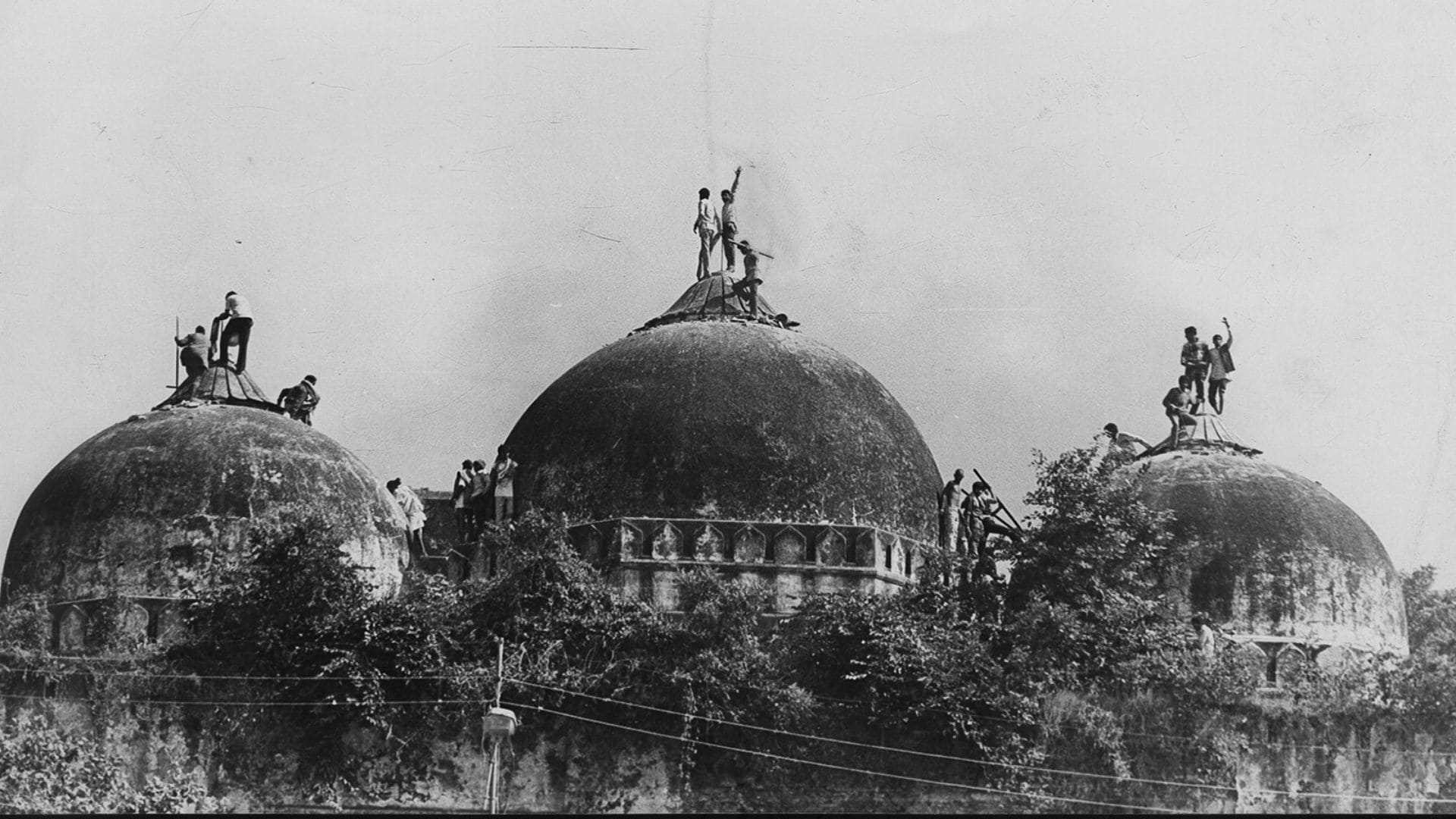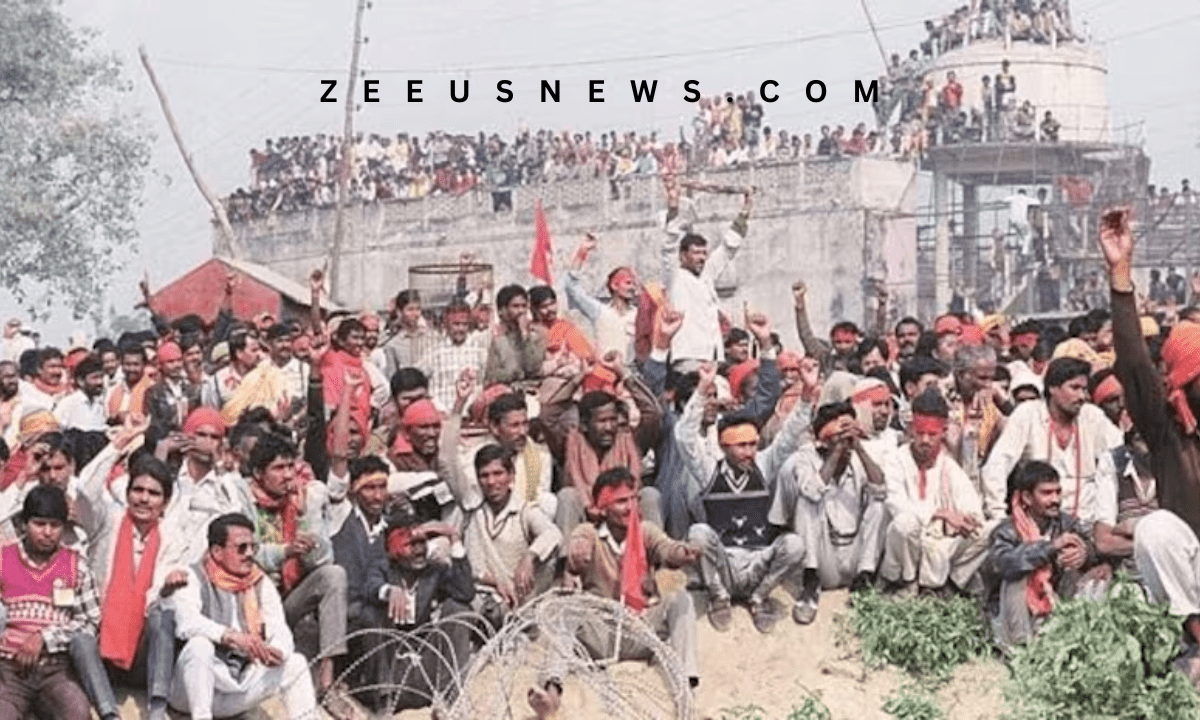Why Was Babri Masjid Demolished?
Why was Babri Masjid demolished? Delve into the historical narrative of this Ayodhya-based mosque in India. For decades, its rich history and cultural importance have fueled controversy. This blog post embarks on a journey through the intricate details of Babri Masjid – from its construction to present-day implications. Join us as we unravel the deep-seated history and profound significance surrounding this iconic monument.
Exploring the Historical Backdrop of Babri Masjid
1\. Tracing back the Construction Origins of the Mosque
Babri Masjid was constructed in the 16th century during the rule of the Mughal emperor Babur. It is believed to have been built on the site where Lord Ram, a revered figure in Hinduism, was said to have been born. The mosque served as a place of worship for the Muslim community in Ayodhya and became a symbol of religious harmony.
2\. Understanding its Architectural Splendor and Cultural Significance
The architectural splendor of Babri Masjid was a testament to the grandeur of Mughal design. Its intricate carvings, domes, and minarets showcased the exquisite craftsmanship of the time. The mosque not only held religious significance but also attracted scholars, artists, and travelers from various parts of the world.
3\. Analyzing its Geographical Relevance in Ayodhya
Ayodhya, the birthplace of Lord Ram, holds immense religious importance for Hindus. The presence of Babri Masjid on this site became a point of contention due to conflicting beliefs and historical claims. The geographical relevance of the mosque heightened the significance of the dispute that followed.

A Historical Timeline: From Genesis to Controversy
A. The Inception of Babri Masjid
1\. Examining the Establishment of the Mosque in the 16th Century
Mir Baqi, a general in the Mughal army, was responsible for the construction of Babri Masjid. The mosque was named after Babur, the Mughal emperor. Mir Baqi wanted to create a place of worship for the Muslim community and chose the site in Ayodhya due to its religious significance.
2\. Diving into the Reasons Behind its Construction by Mir Baqi
Apart from religious motives, Mir Baqi’s construction of Babri Masjid was also driven by political and cultural factors. It was a symbol of Mughal dominance in the region and aimed to establish a strong presence of Islam in Ayodhya.
3\. Exploring the Prevailing Cultural and Religious Atmosphere during that Era
The 16th century was a period of cultural exchange and religious syncretism. Babri Masjid stood as a testament to the cultural diversity and mutual respect observed during that era. It represented the harmony between different faiths and the coexistence of Hindu and Muslim communities in Ayodhya.
B. The Disputed Structure and Ensuing Conflicts
1\. Detailing the Divisive Events Surrounding the Mosque in the 19th and 20th Centuries
In the 19th century, disputes regarding the ownership and control of Babri Masjid emerged. The mosque became a focal point of tension between Hindus and Muslims. The conflicts escalated in the 20th century, leading to communal riots and clashes Why was Babri Masjid demolished?
2\. Investigating the Legal and Political Disputes that Arose
Legal battles surrounding Babri Masjid intensified with time, with multiple parties claiming ownership over the site. The case went through various court proceedings, fueling the polarization and communal divide among the people.
3\. Shedding Light on the Communal Tensions and Subsequent Riots
The disputes over Babri Masjid led to communal tensions and riots, resulting in the loss of lives and property. The emotional significance attached to the mosque and the conflicting belief systems involved aggravated the conflicts, leaving a lasting impact on the social fabric of the region.
III. Cultural Significance and Symbolism
A. The Mosque’s Role as a Cultural and Architectural Marvel
1\. Unveiling the Exquisite Mughal Architecture Exhibited in Babri Masjid
Babri Masjid showcased the brilliance of Mughal architecture, characterized by its intricate carvings, calligraphy, and geometric patterns. The structural design and architectural enchantment of the mosque made it a celebrated marvel in the region.
2\. Highlighting its Architectural Brilliance through Intricate Detailing
The mosque’s intricate detailing, including floral motifs, arabesques, and delicate stone carvings, Why Was Babri Masjid Demolished the mastery of Mughal craftsmen. It reflected the union of artistic finesse and religious devotion, making Babri Masjid a testament to the cultural heritage of Ayodhya.
3\. Discussing its Cultural Significance and Influence on Subsequent Structures
Babri Masjid’s cultural significance extended beyond its religious identity. It influenced the architectural style of subsequent structures in India, inspiring elements of Mughal design in various monuments and buildings.
B. Babri Masjid as a Symbol of Religious Harmony and Communal Coexistence
1\. Exploring Historical Anecdotes of Peaceful Cohabitation around the Mosque
Historical accounts depict instances of peaceful cohabitation between Hindus and Muslims in the vicinity of Babri Masjid. People of different faiths interacted, attended festivals together, and celebrated the cultural diversity of Ayodhya.
2\. Analyzing its Role in Interfaith Relations over Time
Babri Masjid played a significant role in fostering interfaith dialogue and understanding. It served as a physical representation of harmony, reminding people of the shared cultural and historical heritage of the region.
3\. Reflecting on the Legacy of Babri Masjid Before its Destruction
Before its destruction, Babri Masjid held immense cultural and historical value. It embodied the spirit of unity and coexistence that defined Ayodhya for centuries. Why Was Babri Masjid Demolished bringing an end to an era of communal harmony, leaving a void that still needs to be healed?


IV. The Demolition and Legal Battle
A. The Destruction of Babri Masjid
1\. Unearthing the Events Leading to the Mosque Demolition in 1992
Why Was Babri Masjid Demolished in 1992 was a tragic event that sparked nationwide outcry and violence. The disputed structure was razed to the ground by a mob, triggering widespread communal strife and unrest.
2\. Exposing the Aftermath of the Incident on Communal Relations
Why Was Babri Masjid Demolished have a profound impact on communal relations in India? It exacerbated religious tensions and widened the divide between communities, leading to further conflicts and polarization.
3\. Evaluating the Political and Social Ramifications of the Demolition
The political and social ramifications of Why Was Babri Masjid Demolished were far-reaching. It influenced electoral politics, shaped public opinion, and intensified identity-based politics. The incident became a rallying point for various political factions, further complicating the resolution of the dispute.
B. The Legal and Judicial Proceedings
1\. Analyzing the Various Court Cases and Verdicts Associated with the Dispute
The Babri Masjid case witnessed a series of legal proceedings over several decades. Different courts and commissions explored the ownership claims and legal aspects of the dispute. The verdicts differed, leading to prolonged legal battles and challenges.
2\. Assessing the Impact of Legal Proceedings on Societal Perceptions
The legal proceedings surrounding Babri Masjid influenced societal perceptions and shaped the narrative of the dispute. People formed opinions based on the interpretations of legal verdicts, contributing to public sentiment and exacerbating the divide between communities.
3\. Discussing the Present Scenario and Future Prospects of the Site
As of today, the site where Why was Babri Masjid demolished once stood remains a subject of contention. Efforts are being made to find a peaceful resolution and establish a structure that respects the sentiments of both Hindus and Muslims. The prospects of the site depend on the collective will of the involved parties to reconcile and move forward.


V. The Babri Masjid Controversy – A Socio-Political Perspective
A. Understanding the Socio-Political Implications
1\. Tracing Political Motives Connected to the Babri Masjid Dispute
The Babri Masjid dispute has been intertwined with political motives. Different political parties have exploited the issue to gain power, mobilize support, and manipulate public sentiment. Why was Babri Masjid demolished The controversy became a tool for political agendas, often at the cost of communal harmony.
2\. Investigating the Impact of the Controversy on Indian Society
The Babri Masjid controversy had a profound impact on Indian society, contributing to the deepening of religious fault lines and communal tensions. It challenged the secular fabric of the nation and highlighted the complexities of managing diversity in a pluralistic society.
3\. Examining the Polarization and Repercussions within the Political Landscape
The Babri Masjid dispute polarized the political landscape, with parties taking staunch positions in favor of their respective communities. The controversy propelled identity politics, leading to political fragmentation and a rise in religiously oriented movements in India.


B. The Way Forward for Babri Masjid
1\. Assessing the Possibilities of Reconciliation and Peaceful Resolution
Finding a resolution to the Babri Masjid dispute requires dialogue, understanding, and empathy. Reconciliation can only be achieved through a collective effort to prioritize communal harmony over divisive agendas. Engaging in sincere conversations and accommodating the sentiments of all stakeholders can pave the way for a peaceful resolution.
2\. Identifying Opportunities for Communal Harmony and Dialogue
Communal harmony can be fostered through initiatives that encourage interfaith dialogue and collaborative efforts. Platforms for the exchange of ideas, cultural exchanges, and mutual understanding can help bridge the divide between communities and promote a shared vision of inclusivity.
3\. Discussing Potential Ways to Preserve the Monument’s Legacy
Preserving the legacy of Babri Masjid requires a delicate balance between historical significance and societal peace. Options such as maintaining the site as a historical monument, creating a memorial, or constructing a structure that represents religious harmony should be explored. The focus should be on promoting unity and healing rather than perpetuating divisions.
Conclusion: Why Was Babri Masjid Demolished?
Babri Masjid deep-seated history and profound significance are undeniable. It stood as an architectural marvel, a symbol of religious harmony, and a testament to India’s cultural diversity. Why Was Babri Masjid Demolished? However, the controversy surrounding the mosque, its demolition, and the subsequent legal battles have left deep scars on the country’s social fabric. Moving forward, it is crucial for all parties involved to prioritize dialogue, reconciliation, and communal harmony. Preserving the legacy of Babri Masjid should be a collective endeavor to ensure that future generations can learn from its history while fostering an environment of inclusivity and peace.



Ahaa, its nice discussion on the topic of this article
at this place at this weblog, I have read all that,
so at this time me also commenting here.